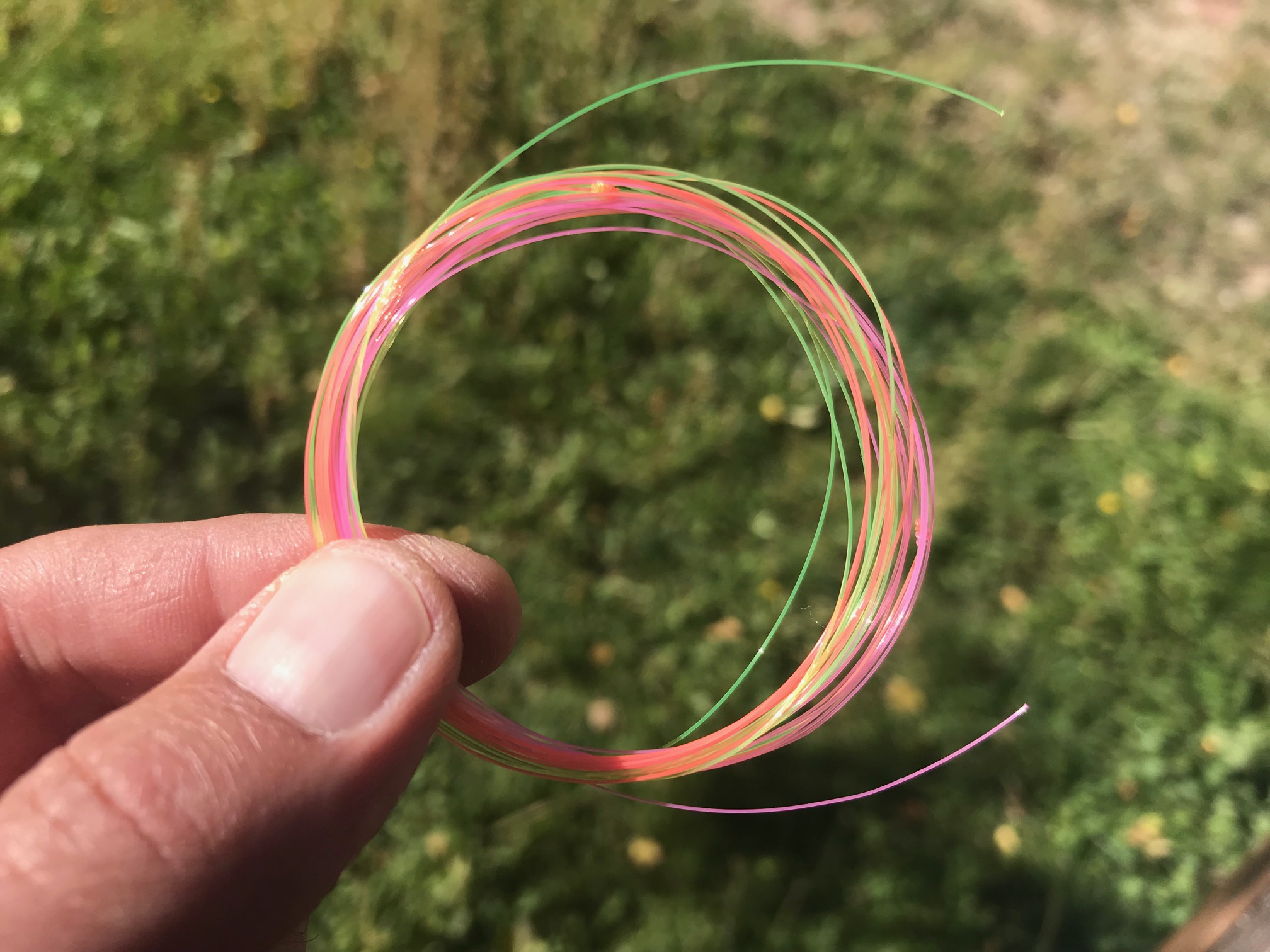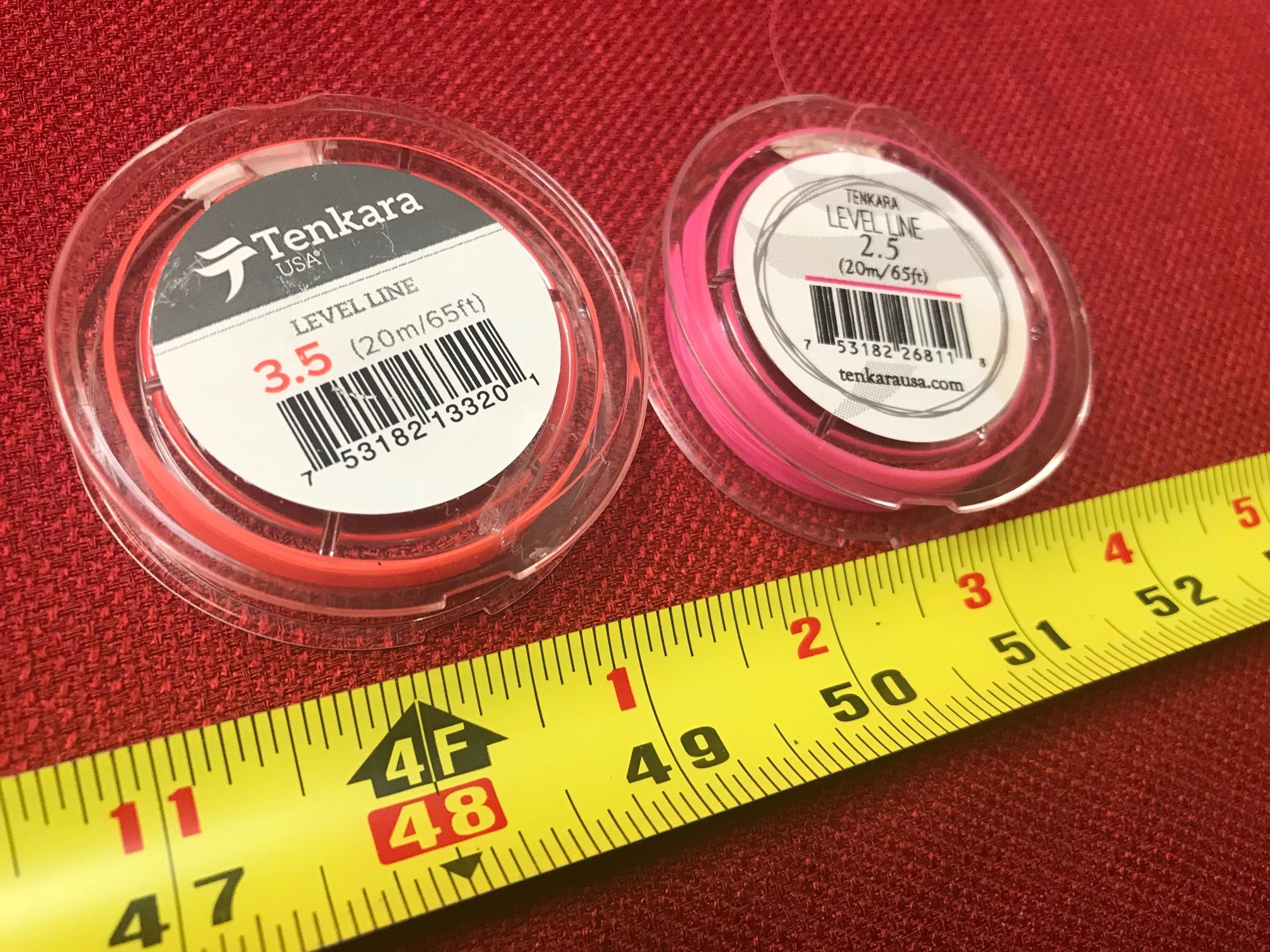 One of the advantages of having a diverse background in fishing is that there can be some interesting crossover among the different genres. I’ve borrowed many tips, tactics and techniques from spin fishing, bait casting, deep sea fishing and (of course) western fly fishing that I’ve been able to incorporate into my tenkara fishing over the years. A recent one was inspired from my saltwater fishing experience and I thought it was worth sharing as it’s proved to be very successful for me.
One of the advantages of having a diverse background in fishing is that there can be some interesting crossover among the different genres. I’ve borrowed many tips, tactics and techniques from spin fishing, bait casting, deep sea fishing and (of course) western fly fishing that I’ve been able to incorporate into my tenkara fishing over the years. A recent one was inspired from my saltwater fishing experience and I thought it was worth sharing as it’s proved to be very successful for me.
I’ve done a considerable amount of fly fishing in saltwater for tarpon, permit, bonefish, stripers, bluefish, jacks, barracuda, and more (and still do whenever I can). With the exception of bonefish, I used a pretty hefty leader (sometimes with a wire bite guard) that would cover most inshore species. But buying pre-made saltwater leaders can be expensive since they don’t last long against sharp teeth, rough scales, sandpaper-like coral, and stubborn mangrove roots. One day, I came across a simple leader formula in a magazine that worked for 90% of the fish I targeted and was quick, easy, and cheap to tie. I can’t remember who invented it now, but it was three feet of 30 lb., three feet of 20 lb., and ten feet of 10 lb. Maxima which formed a multi-purpose nine foot leader. It turned over bulky Deceivers and weighted Clousers with ease and if it got torn up, was inexpensive to replace. It got me thinking about applying a similar principle to my tenkara lines.
In general, I prefer level fluorocarbon, but lately, I’ve been fishing some of the newer tapered nylon lines that have come out and I really like them. The nylon is light and easy to keep off the water, and the transfer of energy from the thicker butt end to the thinner tip makes for a great turnover. They’re a pleasure to cast. I wondered If I could somehow replicate that turnover with level fluorocarbon and after a fair amount of experimentation, I think I’ve found a winning formula:
4′ 4″ of #4.5 – 4′ 4″ of #3.5 – 4′ 4″ of #2.5
This forms a 13′ leader (I typically fish a 12′ or 13′ rod) that turns over extremely well (even in wind), yet still makes a delicate presentation with the #2.5 end and is easy to keep out of the water. In the photo above, it’s tied with various colors just because that’s what I had on hand, but you could use any color combination you like. In fact, you could even use clear fluorocarbon from your local tackle shop. Whichever colors you use, I’d recommend making the last segment (closest to the tippet) a hi-vis color such as orange for easier strike detection. I use Tenkara USA level line, but you can use any brand you like. One piece of advice though … don’t mix and match brands. Even though they may use the same numeric system to describe a line, the actual diameters can vary from brand to brand. So a #3.5 Sunline may not be the same diameter as a #3.5 Fujino. It’s best to use the same brand for all three segments.
 My tenkara line formula is simple, easy to remember, and easy to make with just two blood knots. It’s also very cost effective–you can tie many lines with just one spool of each diameter. And by the way, if you’re intimidated by the mere mention of “blood knots”, don’t be. They’re easier than you think. Watch this video to see a simple method for tying them:
My tenkara line formula is simple, easy to remember, and easy to make with just two blood knots. It’s also very cost effective–you can tie many lines with just one spool of each diameter. And by the way, if you’re intimidated by the mere mention of “blood knots”, don’t be. They’re easier than you think. Watch this video to see a simple method for tying them:
So far, I’m extremely happy with this line but it’s open to interpretation. You could tweak the measurements to achieve different lengths, mix and match different colors, or pimp it out with some snazzy hardware like tippet rings or Dacron loops. But I fish it as described and it works perfectly for me without adding too much complexity. Give it a shot and let me know what you think. And as always, I’d love to hear your results, feedback, and suggestions.








Nice article and great video on the infamous blood knot
I love it……..mahalo
Hi Jason. As usual, you are providing great and insightful line information. The following leader formula has worked out well for me in combination with Tenkara PVC Floating tenkara Lines, floating line length usually about the same length as the rod being used. 36″ of #4.5 Level FC. Line, 24″ of #3.5 Level FC. Line, 18″ of #2.5 FC. Line, and 12″ of 8 Lb. test No-Vis FC. spinning line (.009″ in diameter) with 2 to 3 feet of 5X FC Tippet material for the tippet to fly connection – rated @ 5 Lb. test breaking strength and .006″ in diameter. For joining knots for the different diameter line sections, the Double Figure Eight Knot has proven to be strong, quick and easy to tie….Karl
Here is a good video (300% line enlargement in contrasting colors for easy knot how to viewing) of Tenkara Specific Knots showing a quick and easy way of doing the standard Figure-8 Knot. https://www.youtube.com/watch?v=x3oAA9uklIg
In the above Floating Tenkara Line / Leader application, the traditional HiVis Fluorocarbon T-lines are not really what is needed. Here is a Stealth line of Level FC T-lines that will work much better in that application: https://www.tenkarabum.com/sanyo-valcan.html
Very cool, will give this knot and the stepped line a try next time out!
Lines of the same gou ( 号) size from different manufacturers should be the same weight (within manufacturing / production tolerances) though they probably will be slightly different in diameter
I’ve discovered that a 4 号 line will be either 4x the weight of a 1 号 line or 4x the cross section area of a 1 号 line. Thus the sizing is the ratio of either weight or cross section area of the lines. The ratios of line weight or cross section area are probably more consistent with lines from the same manufacturer.
In your advice how-to make the tapered line using lines only from the same brand. What line characteristic do you think is more important – line weight or line diameter?
Or is the most important line characteristic, and most important reason to only use one brand of line, not consistency of line weight /,diameter step changes between sizes, but rather the difference in line stiffness or suppleness between brands?
It may indeed be best practice to use only one brand of line. otoh, mixing brands might not matter too much or could be used to advantage.
Welcome back Jason. You went silent for a while and I fell out of routine checking TT for new updates.
Hi David, good to see you back too! You can subscribe to the blog by entering your email address in the sidebar so you’ll get notifications when I post. I’ve written quite a few posts since I last heard from you so I hope you didn’t miss anything!
As to your question, I think both diameter and weight matter. But the diameter can negate the weight if it counteracts the density. So imagine you have two different lines, each with the same formula of fluorocarbon, but one is thicker than the other, it would seem to me that even though the material is the same density, the wind resistance of the thicker line would cause it to not have the same transfer of energy as the thicker line. What do you think?
I don’t get too scientific about it. I’m not taking a micrometer to my lines and making sure the diameters are perfect (although I do have one so I could). I just think unless you want to drive yourself mad obsessing over diameter, it’s just easier to stick with the same brand, since they’re likely using the same formula. At any rate, a slight anomaly probably doesn’t really matter at the end of the day.
Hi Jason,
I like it! What I especially like is that with loops on both ends you could quickly reverse the line for different casting situations.
Fish the #4.5> #3.5 > #2.5 for low wind, and reverse it for #2.5> #3.5 > #4.5 for higher winds.
Mark
Awesome article..
Good article. I wish I had found it sooner. I independently concluded that a knotted tapered flouro tenkara line would be more versatile than a true level line. The latter seems best suited for casting weighted nymphs and a poor choice for dries. However, tapered line of adequate strength should be able to cast weighted nymphs equally well while being superior in transferring energy to dry flies and light dry/dropper rigs.
As for buying 2.5, 3.5 and 4.5 size level lines from one company: sounds like good advice, but apparently it is no longer possible. I cannot find a brand that makes all three sizes. Tenkara USA only sells 3.5 and 4.5, at this point. Dragontail has a 2.5 and, when in stock, a 3.5. Sunline has but a 3.5 and a 4.5. Maxcatch has a 2.5. It seems it will be necessary to mix brands to duplicate your formula.
Hi Spence,
Have you looked at Tenkara-Ya and the Oni Shop?
https://www.tenkaraya.com/product-list/3
https://oni-ten.onlinestores.jp/category/select/cid/317
You should be able to find all those sizes there.
Both shops are new to me. I could not find all three sizes used in your formula from one manufacturer on the Tenkara-Ya site, but for sure, the Oni-ten store has them. Thank you.